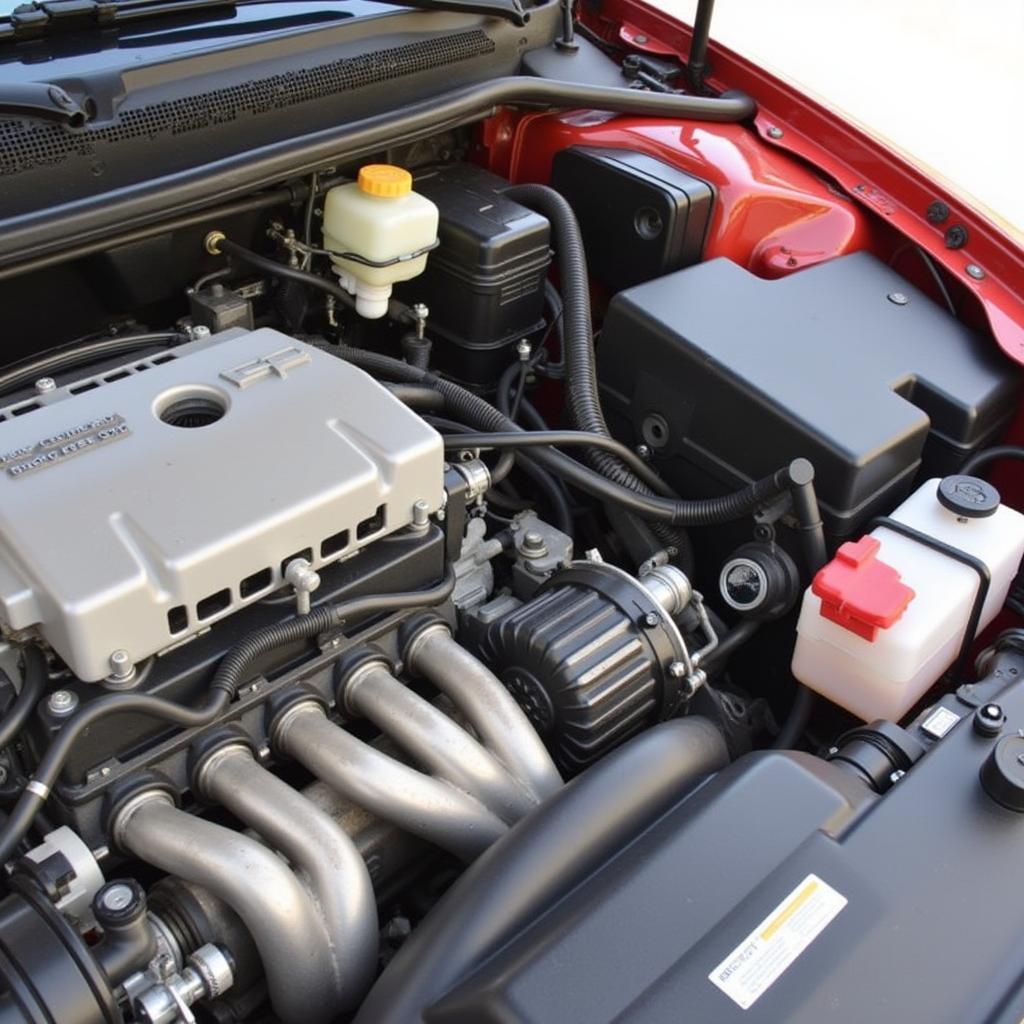The dreaded check engine light can be a source of anxiety for any car owner. When it illuminates, it often comes with a side of mystery. What’s causing the issue? Is it serious? What needs to be done to fix it? Luckily, every check engine light is accompanied by a specific OBD2 code that helps pinpoint the problem. One such code is P0133, which indicates a problem with the oxygen sensor circuit. This comprehensive guide will delve deep into the P0133 code, explaining its meaning, causes, symptoms, diagnostic procedures, and most importantly, how to fix it.
Understanding OBD2 Code P0133
Your car’s engine relies on a delicate balance of air and fuel for optimal performance and emissions control. The oxygen sensor plays a crucial role in maintaining this balance. It constantly monitors the oxygen content in the exhaust stream and sends this information to the Engine Control Unit (ECU). The ECU uses this data to adjust the air-fuel mixture accordingly.
The P0133 code specifically refers to a problem with the oxygen sensor circuit on Bank 1, Sensor 1. This is the sensor located upstream of the catalytic converter on the side of the engine with cylinder #1. The code means that the ECU has detected a slow response time from this sensor. In simpler terms, the sensor is taking too long to report changes in the oxygen levels in the exhaust.
Common Causes of P0133 Code
Several factors can contribute to a slow response time from the oxygen sensor, triggering the P0133 code:
- Faulty Oxygen Sensor: The most common culprit is a worn-out or malfunctioning oxygen sensor. Over time, the sensor’s internal components can degrade, leading to slower response times and inaccurate readings.
- Wiring Issues: Damaged, corroded, or loose wiring connections in the oxygen sensor circuit can disrupt the signal transmission between the sensor and the ECU.
- Exhaust Leaks: Leaks in the exhaust manifold, downpipe, or other components upstream of the oxygen sensor can introduce fresh air into the exhaust stream, confusing the sensor and causing inaccurate readings.
- Vacuum Leaks: Leaks in the engine’s vacuum system can disrupt the air-fuel mixture, indirectly affecting the oxygen sensor’s readings.
- Faulty ECU: While less common, a malfunctioning ECU can also trigger the P0133 code.
Symptoms of a P0133 Code
While the check engine light is the most obvious symptom of a P0133 code, other symptoms may indicate this issue:
- Decreased Fuel Economy: A sluggish oxygen sensor can cause the engine to run rich (too much fuel, not enough air), leading to increased fuel consumption.
- Poor Engine Performance: The incorrect air-fuel mixture caused by the faulty sensor can result in reduced engine power, hesitation, and rough idling.
- Failed Emissions Test: A malfunctioning oxygen sensor can lead to increased emissions, potentially causing your vehicle to fail an emissions test.
Diagnosing the P0133 Code
Before attempting any repairs, it’s crucial to accurately diagnose the cause of the P0133 code. Here’s a step-by-step guide:
- Read the Code: Use an OBD2 scanner to read the code stored in your vehicle’s ECU. Ensure that the P0133 code is the only code present.
- Visually Inspect the Oxygen Sensor: Inspect the oxygen sensor for visible damage, such as physical damage, carbon buildup, or loose wiring. Pay close attention to the wiring harness and connector for any signs of wear, corrosion, or damage.
- Check for Exhaust Leaks: Inspect the exhaust system for any leaks upstream of the oxygen sensor. Look for black soot deposits, which can indicate an exhaust leak.
- Test the Oxygen Sensor: Use a multimeter to test the oxygen sensor’s voltage signal. A healthy sensor should fluctuate between 0.1 volts and 0.9 volts. A slow or erratic voltage reading indicates a faulty sensor.
- Inspect Vacuum Lines: Inspect the vacuum lines connected to the intake manifold for cracks, loose connections, or damage.
How to Fix OBD2 Code P0133
The repair method for the P0133 code depends on the underlying cause. Here are the most common solutions:
- Replace the Oxygen Sensor: If the oxygen sensor is faulty, the most effective solution is to replace it with a new one.
- Repair Wiring Issues: If you identify damaged, corroded, or loose wiring in the oxygen sensor circuit, repair or replace the affected components.
- Fix Exhaust Leaks: Repair any leaks in the exhaust system upstream of the oxygen sensor. This may involve tightening clamps, replacing gaskets, or welding cracked components.
- Address Vacuum Leaks: Identify and repair any vacuum leaks in the engine’s vacuum system. This may involve replacing cracked hoses, tightening clamps, or replacing faulty components.
- Consult a Mechanic: If you’re uncomfortable performing these repairs yourself or if the problem persists after attempting these solutions, consult a qualified mechanic for further diagnosis and repair.
Conclusion
The OBD2 code P0133, while potentially troublesome, is usually a straightforward issue to resolve. By understanding the code, its causes, symptoms, and diagnostic procedures, you can effectively address the problem and get your car back to running smoothly. Remember to prioritize a thorough diagnosis before attempting any repairs and always refer to your vehicle’s repair manual for specific instructions. If in doubt, don’t hesitate to seek professional assistance from a qualified mechanic.
Need help with your P0133 code? Contact our team of experts via WhatsApp: +1(641)206-8880, or Email: [email protected]. We’re available 24/7 to provide assistance.


